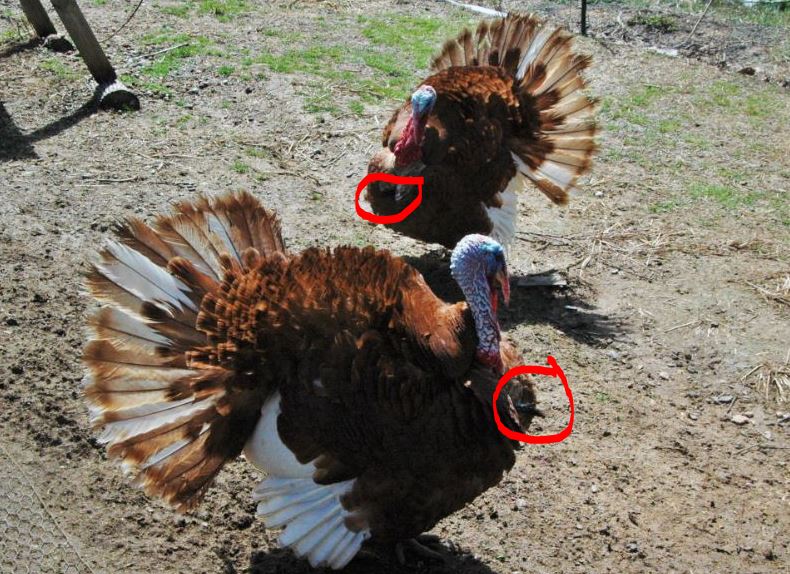Do Turkeys Have Penises? The Answer Will Surprise You!
The question might seem a bit peculiar, but it’s a common one! When we think of turkeys, images of plump Thanksgiving birds or strutting male gobblers often come to mind. But do these birds, both male and female, possess the anatomy we associate with mammals? The answer, as you’ll soon discover, is more nuanced than you might expect. Let’s delve into the fascinating world of turkey reproductive systems and unravel the truth about their “private parts.”
The Male Turkey: Gobblers and Their Reproductive System
Male turkeys, also known as gobblers or toms, are renowned for their impressive displays and vocalizations. Their physical attributes – the fan of feathers, the wattle, and the snood – are well-documented. But what about their reproductive organs?
- No External Penis: Unlike mammals, the male turkey does not possess an external penis in the traditional sense. This is a key difference that often surprises people.
- The Cloaca: Turkeys, like all birds, have a single opening called the cloaca. This serves as the exit for the digestive, urinary, and reproductive systems.
- The Phallus (Yes, There’s a Phallus!): While not a penis, male turkeys do have a phallus, a structure located inside the cloaca. This phallus is a fleshy, ridged organ that becomes engorged with lymph fluid during mating.
- Sperm Storage: The phallus is used to deposit sperm into the female’s cloaca during copulation.
The Female Turkey: Hens and Their Reproductive Anatomy
Female turkeys, called hens, are equally fascinating, though perhaps less flamboyant than their male counterparts. Their reproductive system is designed for egg production and incubation.
- No External Genitalia: Similar to the male, female turkeys do not have external genitalia.
- The Cloaca: The cloaca also serves as the reproductive opening for the hen.
- The Oviduct: Inside the hen, the oviduct is where the egg is formed. The oviduct encompasses the infundibulum (where the yolk is received), the magnum (where the albumen is added), the isthmus (where the shell membranes are added), the uterus (where the shell is added), and the vagina (which leads to the cloaca).
- Sperm Storage: Hens have the ability to store sperm from the male for a period of time, allowing them to lay fertile eggs for several weeks after a single mating.
Mating Rituals and Behavior
The mating rituals of turkeys are a sight to behold. The male turkey employs the following strategies:
- Strutting: Gobblers engage in elaborate strutting displays, fanning their tail feathers, spreading their wings, and fluffing their body feathers to attract hens.
- Gobbling: Loud vocalizations (gobbling) are used to announce their presence and assert dominance.
- Competition: Males often compete with each other for access to females.
The Significance of the Phallus: Evolution and Function
The presence of a phallus, even if not a penis in the mammalian sense, is significant for several reasons:
- Evolutionary History: The phallus points to the evolutionary lineage of birds and their divergence from other vertebrates.
- Efficient Reproduction: The phallus facilitates efficient sperm transfer, improving the chances of successful fertilization.
- Variation: The size and shape of the phallus can vary between different bird species, demonstrating the diversity of reproductive strategies in the avian world.
Conclusion: A Surprising Truth
So, do turkeys have penises? The answer is a qualified “no.” While male turkeys don’t possess an external penis like mammals, they do have a phallus, a structure within the cloaca that plays a crucial role in reproduction. This fascinating adaptation highlights the unique reproductive strategies found in the avian world and underscores the diversity of life on Earth. The next time you see a turkey, remember there’s more to them than meets the eye!
Frequently Asked Questions (FAQs)
1. Do all male birds have a phallus?
No, not all male birds have a phallus. Some species, like chickens, have a small phallus, while others, like ostriches, have a more prominent one. Some birds, such as many songbirds, reproduce via cloacal contact, where the cloacas of the male and female are pressed together.
2. How long does a turkey’s phallus get during mating?
The length can vary, but the phallus can extend a few inches during mating, becoming engorged with lymph fluid.
3. Can turkeys reproduce without a phallus?
While the phallus is the primary means of sperm transfer, it’s not strictly necessary for reproduction in all bird species. In some species, cloacal contact is sufficient.
4. How do you tell the difference between a male and female turkey?
Male turkeys (gobblers) are typically larger, have more vibrant plumage, a larger snood and wattle, and often a beard (a cluster of bristle-like feathers on their chest). They also exhibit the characteristic gobbling sound.




